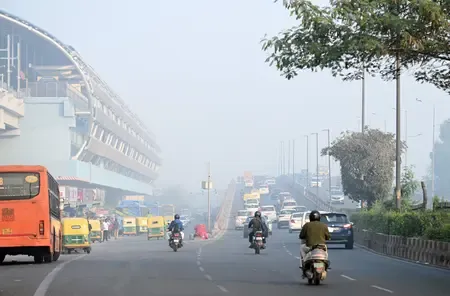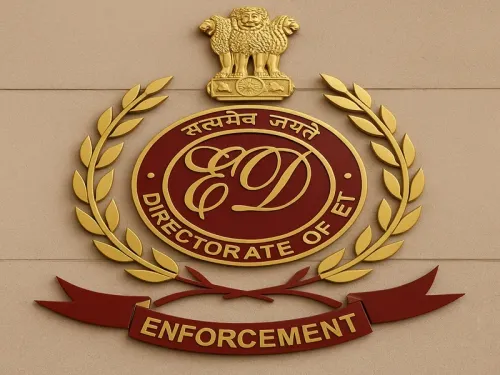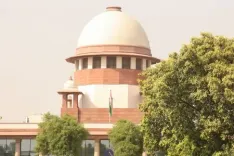Has Delhi's Air Quality Plummeted to ‘Very Poor’ Levels with AQI Over 300?

Synopsis
Key Takeaways
- Delhi's AQI has crossed 300, indicating 'very poor' air quality.
- Major contributors include stubble burning and vehicular emissions.
- Protests are emerging, demanding government accountability.
- Air quality is expected to remain poor until at least November 8.
- Public health is at risk due to deteriorating environmental conditions.
New Delhi, Nov 7 (NationPress) The air quality in Delhi has significantly deteriorated, entering the “very poor” category early Friday, as the city's AQI (Air Quality Index) surpassed 300 in many areas, as reported by the Central Pollution Control Board (CPCB).
At 7:00 a.m., the average AQI for Delhi was recorded at 312, marking a drastic decline in air quality following two days of relative improvement. Surrounding regions also reported elevated AQI levels: Faridabad at 295, Gurugram at 288, Ghaziabad at 296, Greater Noida at 275, and Noida at 289. Most areas in Delhi witnessed AQI levels between 300 and 400, indicating a state of “very poor” air quality.
A thick grey haze enveloped the city on Friday, resulting in reduced visibility and a persistent layer of smog across critical locations.
Near Chandni Chowk, the AQI peaked at 350, while Indira Gandhi International Airport recorded an AQI of 290, categorizing it as “poor”.
Authorities have linked this decline in air quality to decreasing temperatures and an increase in crop residue burning in adjacent states such as Punjab, Haryana, and Uttar Pradesh.
The Decision Support System (DSS) for air quality forecasting indicated that stubble burning was responsible for 21.5% of Delhi's PM2.5 levels on Thursday, with expectations for this percentage to rise to 36.9% on Friday and remain high at 32.4% on Saturday.
Satellite imagery identified 94 instances of stubble burning in Punjab, 13 in Haryana, and 74 in Uttar Pradesh on just Wednesday.
Since Diwali, Delhi's air quality has fluctuated between “poor” and “very poor”, occasionally reaching “severe” levels. Environmentalists and student activists protested at Jantar Mantar on Thursday, demanding government accountability regarding pollution and urging citizens to claim their right to clean air and public health.
Forecasts suggest that Delhi's air quality will likely remain in the “very poor” category until at least November 8, as authorities keep a close watch on pollution levels and stubble-burning activities in the vicinity.









